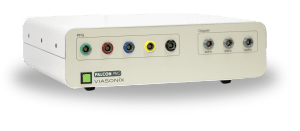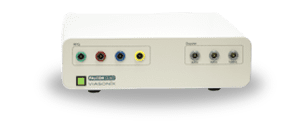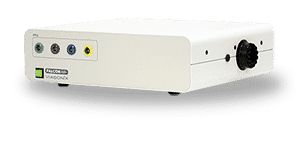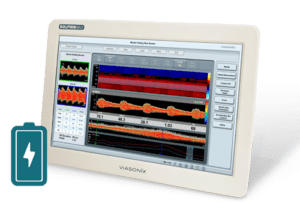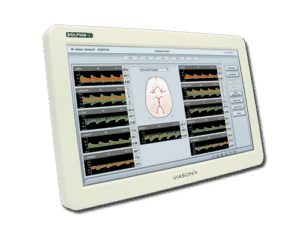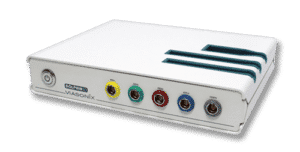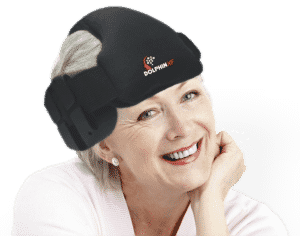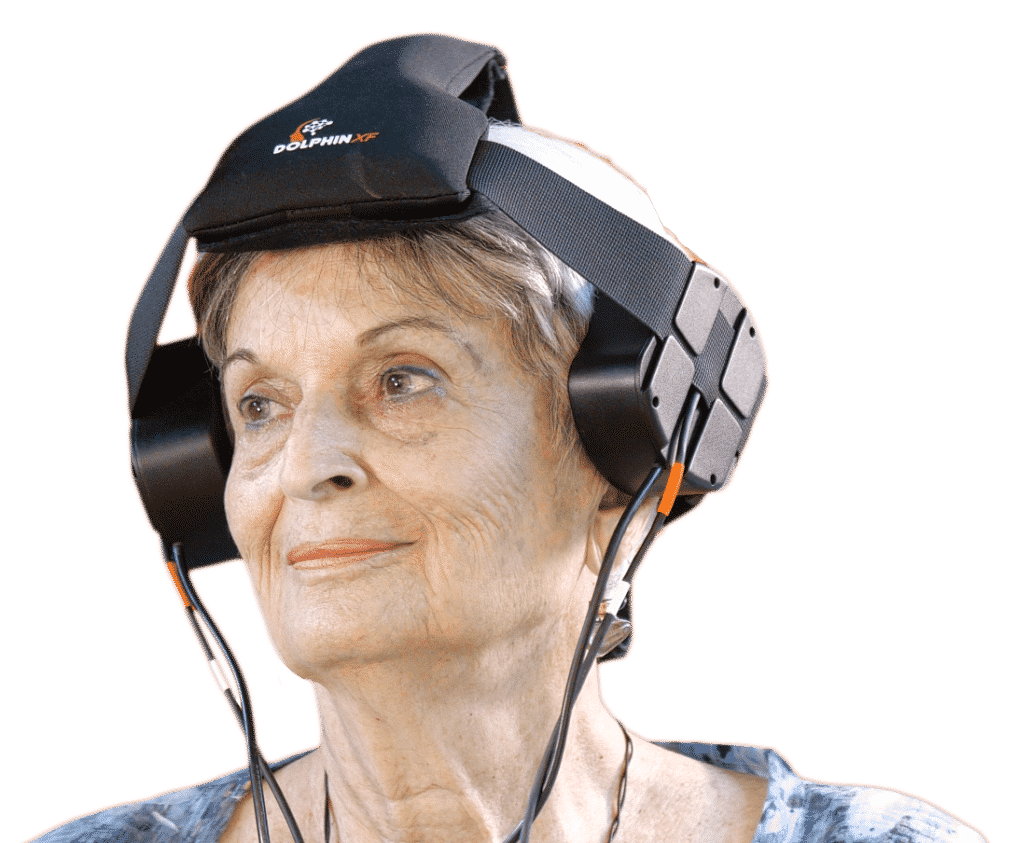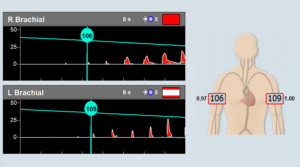What is the Dolphin/XF?
The Dolphin/XF is a robotic Transcranial Doppler machine that automatically finds bilateral Doppler blood flow velocities in the brain’s arteries.
The TCD market was quite stagnant for many years until the appearance of the Dolphin TCD equipment and the Dolphin/XF Transcranial Doppler Robotic Probe. Now, methods of robotically monitoring velocities with 2 MHz probes are quickly becoming widely recognized around the world.
The Dolphin/XF is a leader in robotic Transcranial Doppler monitoring for clinical patient assessment with its advanced and unique technology. The medical Transcranial Doppler monitoring market is rapidly changing in a manner that is way beyond initial expectations.
What Makes the Viasonix Dolphin/XF the Best TCD Robot in the Market?
1. Fast Assembly of the Transcranial Doppler Robot
With the breakthrough design of the Dolphin/XF robot and its unique and IP-protected headgear, assembly on the patient for TCD monitoring can be completed in a matter of seconds.
When time is an essential resource in the ICU, Transcranial Doppler laboratory, or the operating room, quick and simple assembly of the device for obtaining the Doppler signal is critical.
2. Ultra-Fast Brain Scanning
The Dolphin/XF can complete a scan of the temporal windows on both the right and left sides of the brain in less than 20 seconds. This allows the medical staff to appreciate cerebral blood flow velocity quickly and make adjustments if necessary. The ultra-fast software of the Transcranial Doppler robot allows practically immediate assessment of the Middle Cerebral Artery (MCA), as well as other vessels that comprise the Circle of Willis.
Watch Dolphin/XF Performing High Resolution Scan
3. Simple Robotic Transcranial Doppler Operation
The operation of the Dolphin/XF robotic TCD system is as simple as it can get. The Dolphin TCD is an ultrasound Doppler system that automatically identifies the Dolphin/XF Transcranial Doppler robot. Then, all the operator needs to do is simply press a button to start the brain ultrasound scanning, followed by the recording of velocities. The simplicity of TCD operation is ideal for the medical staff that is routinely under stress in the Intensive Care Unit or Emergency Room. The staff must focus on the patient rather than on the Transcranial Doppler equipment.
4. Effective Bilateral TCD Scanning
The powerful Dolphin/XF ultrasound technology and software effectively scan the temporal window in real-time and quickly builds a “map” of the scanned cerebrovascular region where cerebral blood flow in the brain vessels may be located.
Furthermore, the advanced robotic TCD system and robotic probe immediately locates the direction, range, and depth of the optimal blood flow and displays the highest signal quality Doppler spectrum on the screen. This effective and high-quality robotic Doppler detection of flow velocities is critical for improved clinical outcome of stroke patients, as well as patients with various other neuro-complications, including Covid 19.
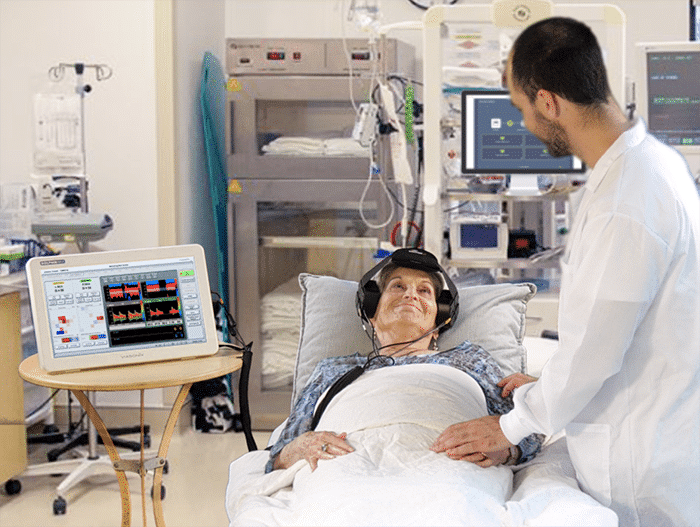
5. Intelligent TCD Robotic Algorithms
The Dolphin/XF Transcranial Doppler robotic system is based on intelligent proprietary algorithms and software designed to automatically and quickly search for doppler waveforms and replace manual actions normally done by the neurosonologist or the professional medical staff.
This special technology of the device frees the TCD examiner to focus on the patient and improve clinical assessment. Furthermore, the highly advanced Dolphin technology and algorithms provide a sophisticated mapping of the scanned brain region with the doppler probes, allowing the examiner to control the preferred vessel and monitored depth with a touch of the screen.
6. Stable TCD Robotic Headgear
The unique and special Transcranial Doppler ultrasound headgear design sits firmly on the head, allowing for head movements without losing the recording of cerebral Doppler signals. Waveform stability is always an issue during TCD monitoring when the patient is restless and moving frequently.
7. Comfortable TCD Headgear
The proprietary and unique headgear design of the Dolphin/XF Transcranial Robotic Doppler system provide ultimate comfort to the patient. Unlike other bulky alternatives, the material of the robot headgear was carefully selected to provide a soft and very comfortable feeling to the patient during TCD monitoring procedures without compromising on signal quality.
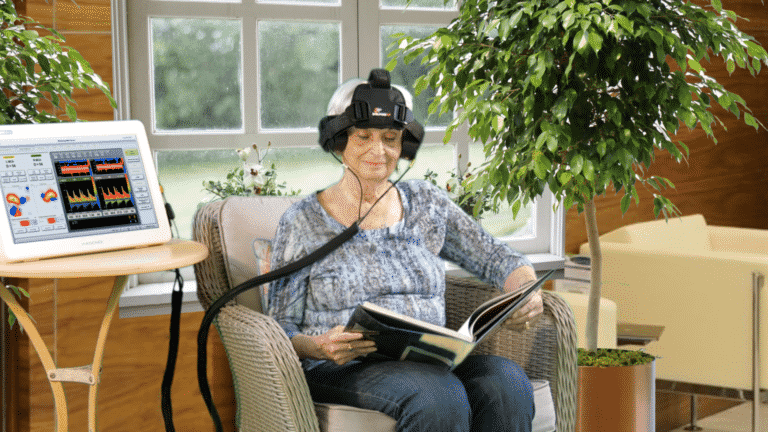
8. Monitoring of Forward and Reverse Cerebral Blood Flow
The unique Dolphin robotic TCD features allow focusing on any cerebral vascular segment identified during the scanning along the range of the ultrasound beam. Thus, forward blood flow velocity at different depths of the Middle Cerebral Artery (MCA) or Posterior Cerebral Artery (PCA) P1 segment can be recorded with the same simplicity of monitoring the reverse flows. Reverse blood flow is often seen in the Anterior Cerebral Artery (ACA) or PCA P2 segments, as well as in the vertebral artery (VA) or Basilar Artery (BA) from the posterior circulation.
9. TCD Monitoring in Various Positions
The Dolphin/XF unique design allows for neuro-diagnosis and monitoring in multiple patient positions.
Measurements of the bilateral flow in the patient’s brain can be as easily performed when the patient is sitting, lying in bed, standing up, or even exercising or walking! This flexibility in the patient’s position allows assessing patient condition better. The remarkable Transcranial Doppler robotic capability opens new horizons for TCD brain monitoring and brain research.
10. New Applications and Performance with TCD Robotics
The simplicity and fast setup of using the Dolphin/XF TCD robotic probe open new clinical horizons and opportunities. For example, Patent Foramen Ovale (PFO) diagnosis, Vasomotor Reactivity (VMR), or Breath Holding testing for assessment of cerebral autoregulation capacity are often performed unilaterally.
Likewise, detection of cerebral micro embolic signals or MCA monitoring of vasospasm patients is often performed unilaterally. With the Dolphin robotic Transcranial Doppler system, these tests can be completed bilaterally with practically no extra effort, improving neuro-diagnosis in patients.
Anaesthesiologists in the OR, whose primary focus is on protecting blood flow to the brain, complain many times that cerebral flow is practically the only parameter that they do not measure due to the complexity involved.
The Dolphin/XF TCD robot solves exactly this automated insonation issue, allowing anesthesiologists to simply and effectively monitor blood flow to the brain through the temporal window during surgery in the OR to prevent neurological complications.
11. TCD Robotics Expands Brain Monitoring to Additional Clinical Settings
The simplicity of setting up and operation of the Dolphin Transcranial Doppler robot machine expands the use of TCD to settings that may not have the availability of experienced TCD sonographers at all times.
Such settings include the neurological Intensive Care Units (ICU), Operating Rooms (OR), and Emergency Rooms (ER). In all of these medical settings, it is rare to find professional TCD sonographers that can operate the TCD machine. The Dolphin/XF robotic transcranial doppler system was specifically designed to assist the medical staff in quickly monitoring the MCA or other cerebral vessels for improved patient protection and treatment.
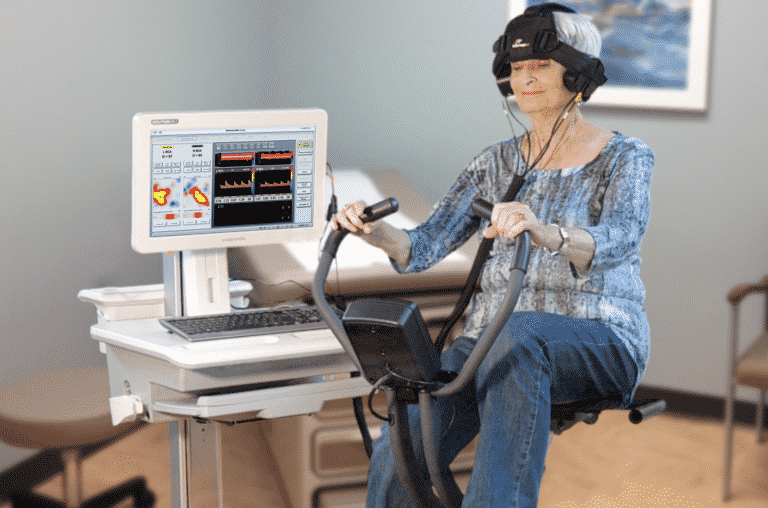
12. Dolphin/XF TCD Robot Assists the Less Professional Medical Staff
Transcranial Doppler is a modality that is heavily dependent on the expertise and experience of professional neuro-sonographers in protecting patients from Traumatic Brain Injury (TBI).
The Dolphin/XF dramatically changes this situation. It assists less experienced users and practically any medical staff can place the simple headgear on the head of patients and effectively monitor cerebral blood flow velocity.
For the First Time – a Truly Affordable TCD Robot
The Dolphin/XF TCD robot and software is not only the best robotic TCD ever designed, but it is also offered to the medical community at a completely affordable price. Enjoy the numerous benefits of the best transcranial doppler equipment with the most advanced TCD robot machine to benefit patients and examiners alike.
For more information, please leave us a message.

